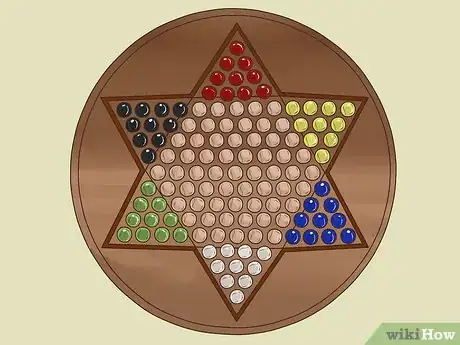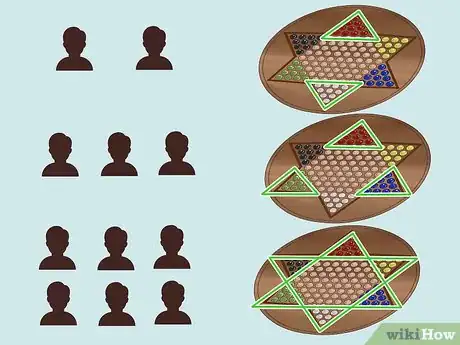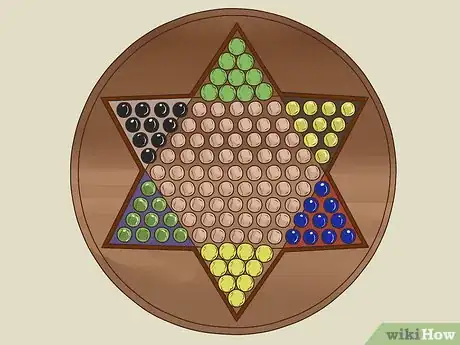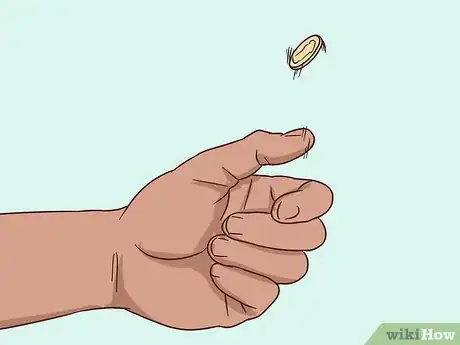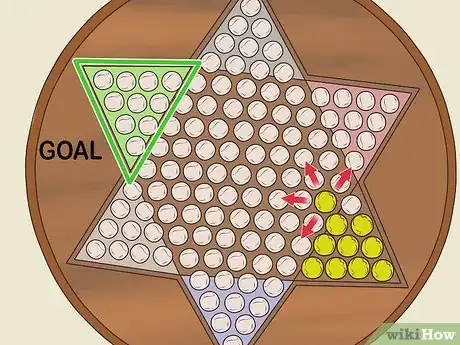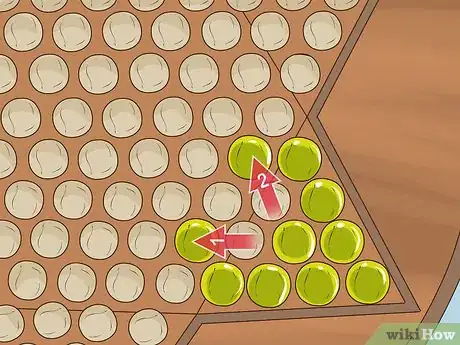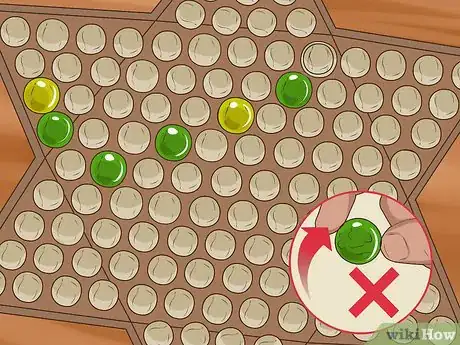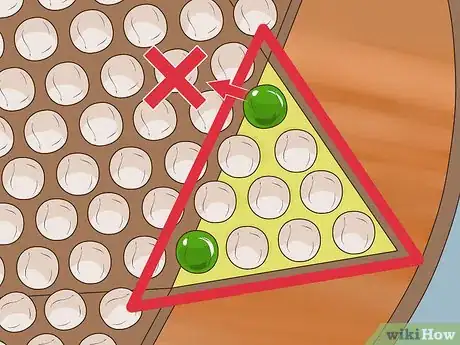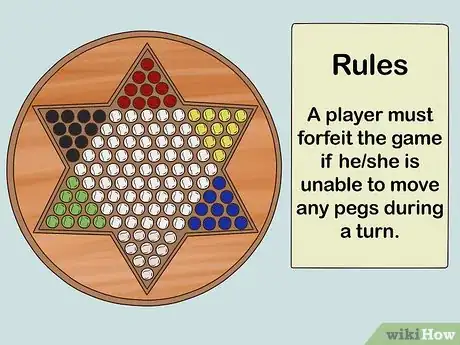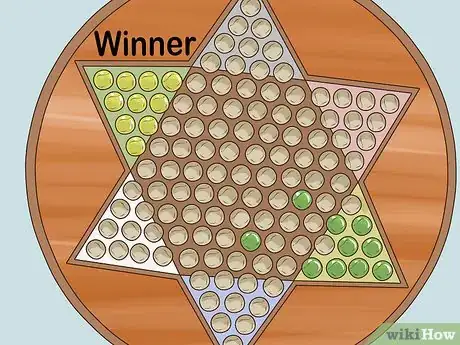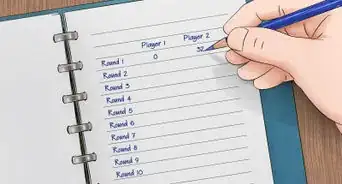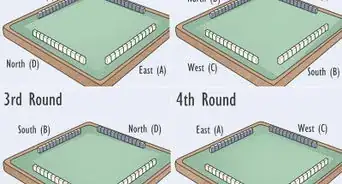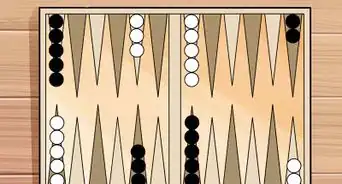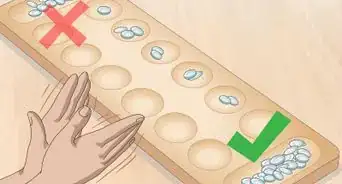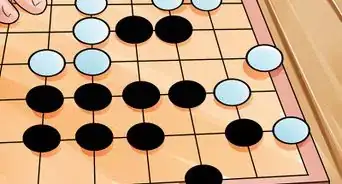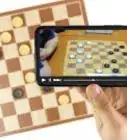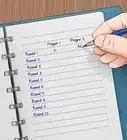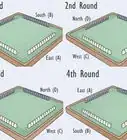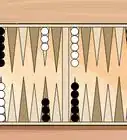This article was co-authored by wikiHow staff writer, Sophia Latorre. Sophia Latorre is a Content Manager on the wikiHow team. Before joining wikiHow, Sophia worked as a technical editor and was published in six International Energy Agency (IEA) Wind Annual Reports. Now, she writes, edits, and reviews articles for the wikiHow Content Team, working to make the content as helpful as possible for readers worldwide. Sophia holds a BA in English from Colorado State University.
This article has been viewed 553,631 times.
Learn more...
Chinese Checkers is a game in which players race each other to see who can fill their destination triangle with colored pegs first. While the game is neither Chinese nor Checkers, it's a fun tactical game invented in Germany but based on an American game called Halma. You can play the game with two to six players. Follow the original rules, or create some of your own to play a variation of Chinese Checkers.
Steps
Setting Up the Game
-
1Familiarize yourself with the game board. The shape of the board is a six-pointed star, and each point has ten “peg” (or marble) holes inside of it. The inner hexagon of the board is also filled with peg holes, and each side of the hexagon has five peg holes along it.
- With most Chinese Checkers boards, each triangular point has a different color. There are also six sets of ten pegs (or marbles), and each colored set corresponds to a colored point.
-
2Choose your starting triangles. The triangles you use will depend on the number of players you have. You can play the game with two, three, four, or six players.[1]
- If playing with two or four players, use pairs of opposing triangles.
- If playing with three players, use every other triangle.
- If playing with six players, use all six triangles.
Advertisement -
3Place your pegs in the peg holes. Use the ten pegs that correspond to the color of your triangle. Not all Chinese Checkers boards have color-coded triangles, however. In this case, you can choose any colored set of pegs you wish.[2]
- While most games are traditionally played with ten pegs regardless of how many players you have, if desired, you can vary the number of pegs based on the number of players.
- For example, a full six-player game would use ten pegs, while each player in a four-player game would use 13, and each player in a two-person game would use 19 pegs.[3]
-
4Flip a coin to determine who goes first. Flip a coin into the air and predict if the coin will land on "heads" or "tails." Let everyone have one turn, and if there are several people who got it right, let them have another turn. Whichever player guesses correctly the greatest number of times is chosen to be the starting player.[4]
- You could also use other "luck of the draw" methods to determine who starts. For instance, you could draw straws or play a game of rock-paper-scissors.
Playing the Game and Moving Pegs
-
1Take turns. After the first person takes his or her turn, the person to that player's left should take a turn next. Continue moving around the board in this matter, traveling to the left until you reach the first player again. The cycle then repeats.[5]
-
2Aim for the opposing triangle. You can move pegs in any direction across the board. You can even move them into other triangles that are not currently in use. To win the game, you must move all ten of your pegs into the triangle directly across from your starting triangle.[6]
-
3Move into one adjacent hole at a time. The most basic way to move one of your pegs is to move it into an adjacent hole. Pegs can move in any direction: side to side, forward, or backward. You can move one peg into one empty hole like this per turn, unless you choose to "hop" your peg over another peg instead.[7]
-
4Hop over other pegs. The other way to move your peg is to "hop" over adjacent pegs into a vacant hole on the other side. There must only be one peg blocking you from the empty hole, and the empty hole must be directly beyond that peg and in the same direction as the peg itself in relation to the peg you move.[8]
- You can only "hop" over a peg during your turn if you have not already moved into a vacant hole directly adjacent to your peg during the same turn.
- You can hop over pegs in any direction, and you can hop over any peg, including your own.
- You can continue to hop over as many pegs as you want during a single turn, as long as you only move one peg. Each peg you hop over must be in line with your peg's current position.
- This is the only way to move a peg more than once during a turn, and it is theoretically possible to hop your way across the entire board in one turn using this tactic.
-
5Do not remove your pegs. Unlike traditional Checkers, you do not remove pegs from a Chinese Checkers board once those pegs have been hopped over. Those pegs stay where they are until the player who is using them decides to move them.[9]
-
6Do not move pegs out of the destination triangle. Once you move one of your pegs into the opposing triangle, you cannot move it out of the triangle for the rest of the game. You can move it within that triangle, though.[10]
- Pegs that are moved into other triangles can still be moved out.
Establishing Rules
-
1Establish rules governing "blocked" holes. With Chinese Checkers, it is legitimate to "block" a player from winning by occupying one of the holes in his or her destination triangle, thereby preventing that player from filling the triangle first.[11]
- You can create a rule which states that a player who is prevented from moving a peg into a destination triangle can swap that peg with the one blocking it.
- You can also decide that if one or more filled holes in an occupied triangle are filled with other players' pegs, these pegs actually count toward the blocked player's victory. If that player has filled all the non-blocked holes within his or her destination triangle, that player wins.
-
2Determine rules about potential forfeits. Even though it is not an official rule, many players choose to enact a rule stating that a player must forfeit the game if he or she is unable to move any pegs during a turn. If this happens, the losing player must remove his or her pegs from the board and sit out the rest of the game.[12]
- Alternatively, if all the players agree to it, you could establish a rule that permits players to "pass" for one turn if they can't move, instead of forfeiting the game.
-
3Decide when to quit. Once a winner has been established, it is your decision whether to stop the game or continue on. Traditionally, the game ends with one winner, and the rest of the players lose. If you want to continue playing until every player has filled his or her destination triangle, though, you may do so.
Community Q&A
-
QuestionI was playing a couple versions online that confused me. I seem to be able to jump when another single peg is two spots away, and jump to two spots past that peg. Is this an official rule?
 Community AnswerThe version of Chinese checkers to which you are referring is probably fast-paced Chinese checkers. This version allows a player to make symmetrical jumps over other pegs, provided the same amount of spaces exist in the line between the pegs (marbles). This creates more hop opportunities for otherwise "stranded" pieces that would have had to made short step moves before they could hop in the traditional manner.
Community AnswerThe version of Chinese checkers to which you are referring is probably fast-paced Chinese checkers. This version allows a player to make symmetrical jumps over other pegs, provided the same amount of spaces exist in the line between the pegs (marbles). This creates more hop opportunities for otherwise "stranded" pieces that would have had to made short step moves before they could hop in the traditional manner. -
QuestionWhen I jump an opponent's peg, does he leave it there, or go back to home base?
 Community AnswerUnlike the more common version of checkers, jumping a piece allows the jumped piece to remain in its current position until that player's turn.
Community AnswerUnlike the more common version of checkers, jumping a piece allows the jumped piece to remain in its current position until that player's turn. -
QuestionIf I am using more than 10 marbles/pegs, do I use more of the adjacent holes lined up with my starting triangle?
 Community AnswerTypically the game is played with 6 marbles/pegs for 3+ players, and 10 pegs for 2 players. However, if you are making your own variation that involves using more than 10, I suggest using 15 and filling the next row of the triangle.
Community AnswerTypically the game is played with 6 marbles/pegs for 3+ players, and 10 pegs for 2 players. However, if you are making your own variation that involves using more than 10, I suggest using 15 and filling the next row of the triangle.
References
- ↑ https://www.mastersofgames.com/rules/chinese-checkers-rules.htm
- ↑ https://www.mastersofgames.com/rules/chinese-checkers-rules.htm
- ↑ http://www.checkerschest.com/chinese-checkers/
- ↑ http://www.checkerschest.com/chinese-checkers/
- ↑ http://www.checkerschest.com/chinese-checkers/
- ↑ https://www.mastersofgames.com/rules/chinese-checkers-rules.htm
- ↑ https://www.youtube.com/watch?v=E0vSvWdNiUg&feature=youtu.be&t=35
- ↑ https://www.youtube.com/watch?v=E0vSvWdNiUg&feature=youtu.be&t=49
- ↑ http://www.checkerschest.com/chinese-checkers/
About This Article
Chinese checkers is a fun board game played with 2, 3, 4, or 6 players where players try to move their 10 pieces, called pegs, across the board to occupy all 10 of the destination holes on the opposite side of the board. To play, each player starts by choosing a colored peg and setting their pieces up in the designated triangle that matches their color. Then, everyone flips a coin to see who goes first. Each turn consists of a player moving one peg. A peg may be moved to any adjacent space as long as it’s open. Players may also hop a peg and land in an open space on the opposite side, regardless of the color of the peg, as long as they’re moving their piece in a straight line. If a player does hop a piece, they may continue to hop pieces as long as there is an empty space on the other side to land on, and they may change directions while hopping if they'd like. Unlike traditional checkers, hopped pieces are not removed from the board in Chinese checkers. Each player is trying to move their pegs to the triangle directly across from them on the board. Once a peg reaches an open space in a player's destination triangle, it cannot be moved out of that triangle for the remainder of the game, but it can be moved within the triangle. Players cannot end their turn with one of their pegs in another player's starting or destination triangle. Play continues clockwise around the table until a player has successfully moved all of their pegs to their destination triangle. Keep reading to learn how to hop multiple pegs in one move!
